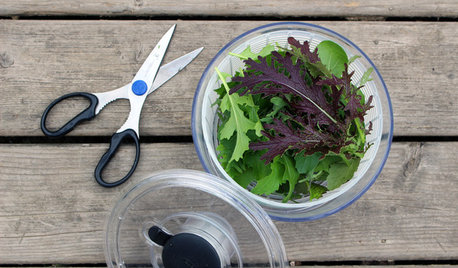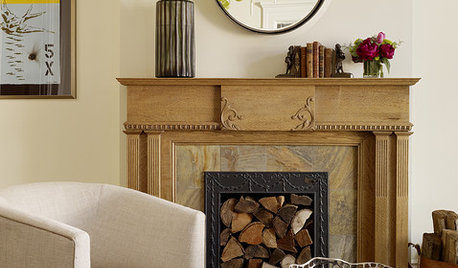help with transplanting seedlings
kawaiineko_gardener
12 years ago
Related Stories

GARDENING GUIDESSeeds or Seedlings? How to Get Your Garden Started
Growing delicious herbs and vegetables starts with knowing your goals and when you want to plant
Full Story
FARM YOUR YARDThe 8 Tools That Help Bring the Farm to Your Table
Vegetable gardeners get a big assist from these essential helpers
Full Story
PETSHow to Help Your Dog Be a Good Neighbor
Good fences certainly help, but be sure to introduce your pup to the neighbors and check in from time to time
Full Story
ORGANIZINGGet the Organizing Help You Need (Finally!)
Imagine having your closet whipped into shape by someone else. That’s the power of working with a pro
Full Story
LIFEYou Said It: ‘Put It Back’ If It Won’t Help Your House, and More Wisdom
Highlights from the week include stopping clutter from getting past the door, fall planting ideas and a grandfather’s gift of love
Full Story
DECORATING GUIDESDownsizing Help: Color and Scale Ideas for Comfy Compact Spaces
White walls and bitsy furniture aren’t your only options for tight spaces. Let’s revisit some decorating ‘rules’
Full Story
PETS6 Ways to Help Your Dog and Landscape Play Nicely Together
Keep your prized plantings intact and your dog happy too, with this wisdom from an expert gardener and dog guardian
Full Story
WINTER GARDENINGHow to Help Your Trees Weather a Storm
Seeing trees safely through winter storms means choosing the right species, siting them carefully and paying attention during the tempests
Full Story
PLANTING IDEASStretch the Budget, Seasons and Style: Add Conifers to Your Containers
Small, low-maintenance conifers are a boon for mixed containers — and you can transplant them to your garden when they’ve outgrown the pot
Full StorySponsored
Columbus Area's Luxury Design Build Firm | 17x Best of Houzz Winner!
More Discussions








eric30
californian
Related Professionals
Lakewood Landscape Architects & Landscape Designers · Leawood Landscape Architects & Landscape Designers · Tomball Landscape Architects & Landscape Designers · Burlington Landscape Contractors · Deer Park Landscape Contractors · Mastic Beach Landscape Contractors · Mequon Landscape Contractors · Merritt Island General Contractors · Peoria General Contractors · West Babylon General Contractors · Cave Spring Decks, Patios & Outdoor Enclosures · Alvin Decks, Patios & Outdoor Enclosures · American Fork Decks, Patios & Outdoor Enclosures · Fishers Decks, Patios & Outdoor Enclosures · Stafford Decks, Patios & Outdoor EnclosuresBets
kawaiineko_gardenerOriginal Author
digdirt2
Bets
digdirt2
gumby_ct
heiderhouse
garystpaul